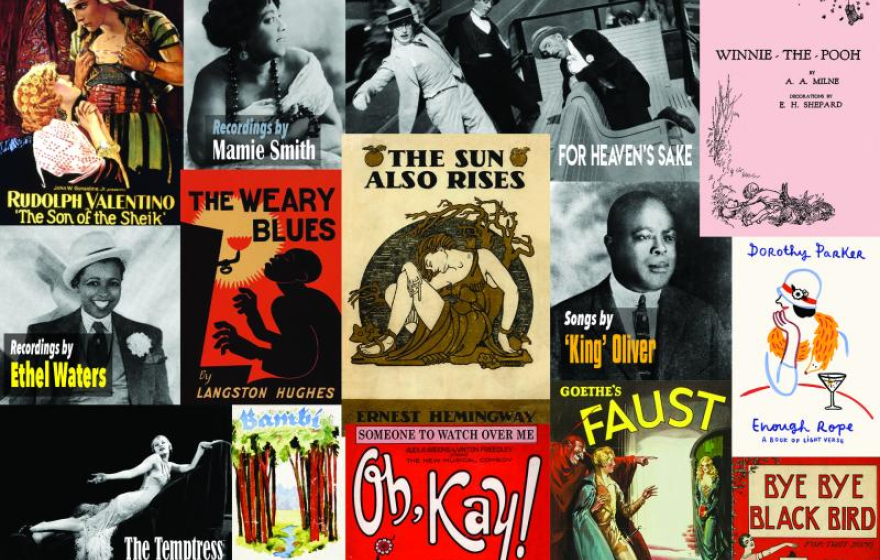Public Domain, Open Access, and Creative Commons
While you are deciding on what resources to include in your course, you may come across these three terms as they relate to copyright. The following is a brief overview of these concepts.
Public Domain

Image by Duke Law School 2022 CC BY. Book covers of some of the works that entered Public Domain on January 1, 2022.
Information in the public domain is the result of at least one of these three factors: the work was not initially eligible for copyright protection, the owner has waived the copyright restrictions to allow the work to be used freely by the public, or sufficient time has passed since the initial copyright came into effect. In Canada, the lifespan of the copyright lasts for 50 years from the first January after the death of the author, also known as the “life-plus-fifty” rule. This means that classical works such as Mozart’s symphonies, Shakespeare’s plays, and novels like Moby Dick are no longer subject to copyright law and may be used in any setting without receiving prior permissions.
Quick Tip: Use a database such as Project Gutenberg to search for works that are part of the public domain.
Open Access

Open Access Week is the last week of October each year. Logo by SPARC* CC BY.
Open access is a publishing model for scholarly communication that makes research information available to readers at no cost, as opposed to the traditional subscription model in which readers have access to scholarly information by paying a subscription (usually via libraries). Open access content typically refers to literature that is “digital, online, free of charge, and free of most copyright and licensing restrictions” (Suber, 2015). Open Access content removes barriers such as price (e.g., subscriptions, licensing fees) and permission (e.g., typical copyright restrictions) that have been agreed to by the author of the works. It should be noted that Open Access can still be compatible with copyright; however, the main difference is that money is not paid by the reader to access the material. For example, with Open Access journals it is typically the producer/author that covers the cost, not the consumer.
For an example of Open Access, try the Directory of Open Access Journals to search for open journals and articles.
Creative Commons
Creative Commons (CC) is an internationally active non-profit organization that provides free licenses for creators to use when making their work available to the public.
A Creative Commons license is a straight-forward approach to granting copyright permissions in a standardized way. From a user perspective, a Creative Commons license on copyrighted works helps answer the simple question of, “What can I do with this work?” There are six types of Creative Commons licenses available, ranging in degree of permissiveness. For example, the most permissive Creative Commons license allows for distribution and modification in any format as long as credit is given to the creator, while the most restrictive does not allow modifications and must not be used for commercial purposes.
Creative Commons works alongside Copyright
Copyright law gives creators certain kinds of control over their creative work. If people want to use copyrighted work, they often have to ask for permission from the creator. Creative Commons works within copyright law. Creative Commons allows creators to give permission in advance. It allows creators to grant permission to everyone in the world to use their work in certain ways.
Quick Tip: Familiarize yourself with the Creative Commons icons which will give you an overview of the type of license applied.
Test Yourself
Review more information on the different types of Creative Commons licenses..